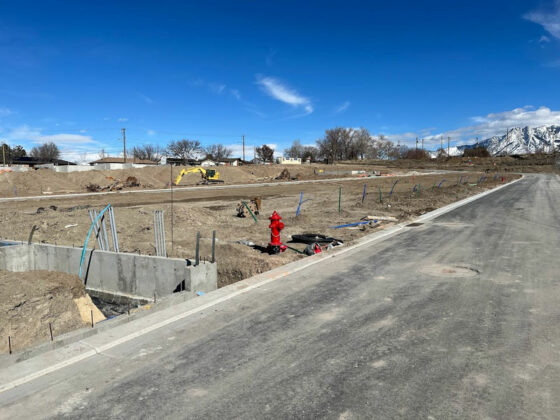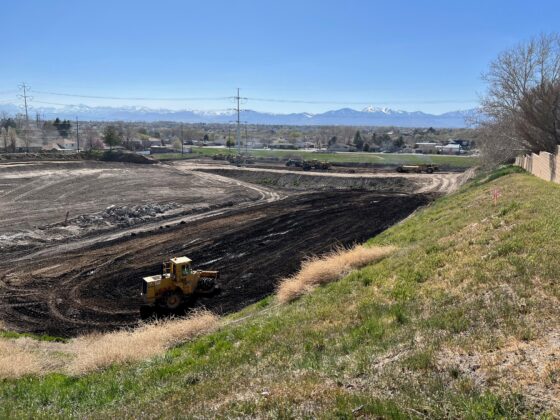 MURRAY CITY, Utah
MURRAY CITY, Utah
TWO years ago, this Salt Lake City suburb began collaborating with a local developer to turn industrial land into a neighborhood of town homes, condominiums and offices. Now the project, known as Birkhill at Fireclay, is finally being built.
The 30-acre $140 million development by Hamlet Homes, one of this region’s largest builders, will have 420 units of housing and 200,000 square feet of retail and office space. Groundbreaking is set to begin in about a month. The idea is to give homeowners easier access to their jobs or to stores.
Murray City and Hamlet Homes are taking advantage of growing buyer interest in living and working near the regional TRAX light rail system, which has operated in the Salt Lake Valley since 1999. The Murray North station, one of three TRAX stops in Murray City — population 50,000 — serves as the centerpiece of Birkhill at Fireclay.
“People can go where they want and won’t have to get in a car,” said Keith Snarr, the director of Murray City’s economic development office, who helped negotiate the agreement with Hamlet Homes. “It may not be the lifestyle for everybody, but there are a lot of people around here now that understand what it means to be urban and find this attractive.”
Salt Lake City and its closest suburbs built the $520 million, 19-mile, 23-station TRAX system, which carries more than 55,000 riders a day, well ahead of ridership projections. Voters have also repeatedly passed sales tax increases, including one approved last November, to spend $2.5 billion more in the next decade to complete 26 additional miles of light rail, 88 miles of heavy commuter rail line and nearly 40 extra station stops. The only American metropolitan area that is building more regional rapid transit capacity is Denver, which is constructing a 151-mile system.
Birkhill at Fireclay is the first development in a 97-acre transit-oriented district Murray City has established around the Murray North station. And it is one of a growing number of transit-oriented developments in the Wasatch Front, an urban area with a population of more than two million that is looking for new ways to get around — less by car, and especially by rail. A host of other American metropolitan regions, among them Minneapolis, Denver, Dallas, Sacramento, St. Louis, Phoenix, San Diego, Seattle and Portland, Ore., have invested billions of dollars over the last decade to pursue the same idea.
Mr. Snarr says he is convinced that the confluence of fast-rising energy and land costs, static incomes and the region’s swift population growth are producing the market conditions for a successful new neighborhood on land along Fireclay Avenue that has served as his city’s industrial backyard.
The existing 23 rail stations and the roughly 40 more stops on the way offer developers dozens of opportunities to design and build transit-focused home and business districts at the center of the Salt Lake Valley’s towns and cities.
“The basic reason that transit-oriented development is working in Utah and other places is largely demographic,” said Gloria Ohland, vice president for communications at Reconnecting America, a national transit research group based in Oakland, Calif. “American households are older, smaller and more diverse,” she said. “Singles are 41 percent of the population. People who are single and couples that have no children — those are the people who gravitate to cities.”
Even with a new tide of people heading their way, transit-focused builders say there are plenty of impediments. Assembling parcels large enough to be attractive requires considerable work in city and town centers. It took Hamlet Homes more than two years to amass the 30 acres for Birkhill at Fireclay.
And in most communities, including Murray City, the zoning regulations that directed homes and businesses to be spread far apart have to be rewritten. Murray City passed a transit development ordinance in 2005 that allows narrower streets, encourages trees and pocket parks, and is designed to produce a new district that is not too densely built up, but also won’t look or feel anything like a typical single-use suburban subdivision.
Michael Brodsky, the chairman of Hamlet Homes, which he founded in 1995, said the difficulties involved in developing around the Salt Lake region’s transit stops are compensated for by the market response. Along with Birkhill at Fireclay, the company is constructing two more housing and business developments near the TRAX stations immediately north and south of the Murray North stop.
The first is Inverness Square, a $24 million, 120-unit project half a mile from the 53rd South TRAX station. The development, started in 2005, is nearly completed, and the two- and three-bedroom town houses, with prices starting around $170,000, are sold out, Mr. Brodsky said.
Last October, the company began developing Waverly Station, on 10 acres alongside the Meadowbrook TRAX station. The $42 million project includes 47 condos, 131 town homes and 14,000 square feet of retail and office space. Hamlet just completed the first phase — 41 two- and three-bedroom town homes of 1,500 to 1,900 square feet. All have been sold, Mr. Brodsky said.
“The fact that we are building close to the light rail station is an important amenity,” he said. “It is part of the package that also includes a combination of affordability and accessibility to a more urban setting.”
Mary Ann Downs, 22, an interior designer, moved into her $193,000 three-bedroom home at Waverly Station in February. Ms. Downs is happy to be near the TRAX system — she plans to use it this spring when the light rail connects to the new commuter line — and she also likes her neighbors.
One of them is David Bailey, 28, who works for a jewelry dealer. He bought a two-bedroom home for $205,000. He said access to the TRAX line, which he rides to basketball and football games downtown, played a part in his decision to buy. “I really feel as gas prices go up, homes near public transportation will increase in value,” he said.
North of Salt Lake City, CenterCal Properties just closed on a $2.13 million purchase of 70 acres near the new commuter rail station in Farmington, a bedroom community of 14,000 residents 13 miles north of Salt Lake City and one of nine stops on a 44-mile, $611 million line to Pleasant View that is scheduled to open in the spring of 2008.
CenterCal, based in Portland, Ore., earned a national reputation in transit-oriented design with its Gresham Station, a 130-acre, $400 million, mixed-use district that it began in 1999 along the MAX light rail line east of Portland.
Fred Bruning, the company’s president, said CenterCal planned to bring the same principles of compact, transit-focused design to its new project, called Station Park, which will be just across the Farmington rail station’s parking lot. It will consist of 700,000 square feet of retailing, 300,000 square feet of office space and 250 residential units in rental apartments and town homes.
A rendering of Station Park on the company’s Web site (centercal.com) shows a district designed with three-story buildings, with shops on the ground floor and offices and homes on the floors above, surrounding a large public square with a fountain, broad sidewalks and a garden. The project’s design is a mix of European urbanism and outdoor suburban lifestyle malls.
“Compared to what is already there in Farmington, this is a lot of density,” Mr. Bruning said. “You have to take it in steps and develop density as the market becomes available. We design our projects in such a way that density can increase over time. If it’s designed well, it has a shelf life for decades.”
The design is intended to mimic urban spaces in which buildings change uses — open spaces can be filled, or buildings can become open space.
Mr. Snarr, Murray City’s development director, has similar plans for the Birkhill at Fireclay, which is priced comparably with the Waverly Station development, and for other projects he is recruiting for the city’s transit-oriented district. “People want to live in a place that’s a little more cosmopolitan,” he said. “They gain a lot. They save money on gas and housing costs. They reduce their stress because they don’t have to drive as much. And they get a chance to know their neighbors. It adds up for me.”




